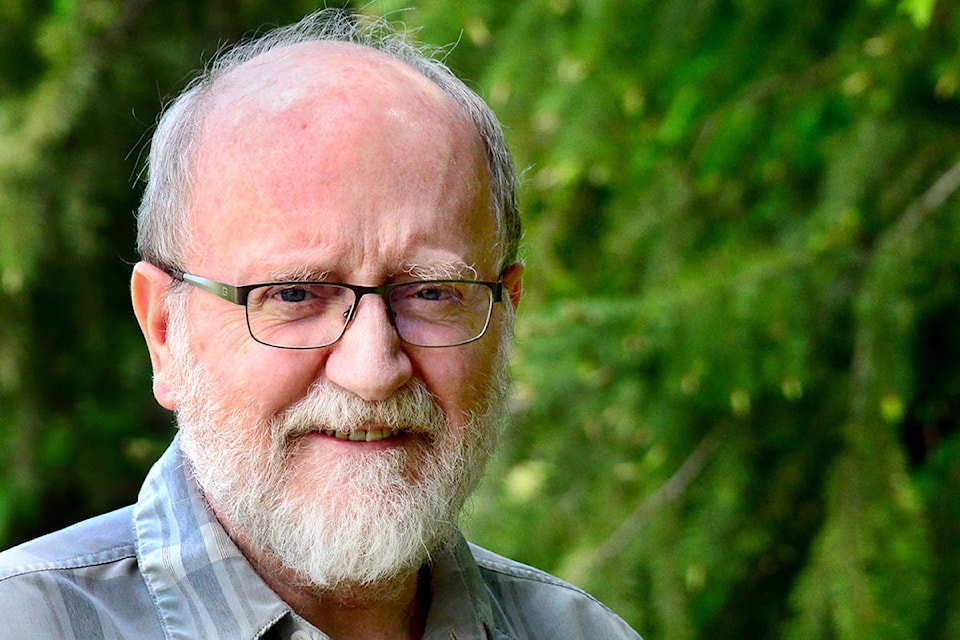The recent trial of Saskatchewan farmer Gerald Stanley, which found him not guilty in the death of Colten Boushie, an Indigenous man who went onto his farm with several others, has created a fair amount of division.
READ MORE: Colten Boushie’s family meets with federal ministers (Feb. 12, 2018)
As some longtime readers of the Times might recall, in 1987 and 1989 your editor, then just a reporter with this newspaper, walked from Clearwater to Toronto. Purpose of the walk was to have been a round-the-world pilgrimage to India and back to honor Mahatma Gandhi, as well as to publicize a petition calling for reform of the United Nations.
Walking across the Prairies left me with some insights to the situation behind what happened on the farm near Biggar on Aug. 9, 2016, though, obviously, not the details.
My first insight is the overwhelming generosity and hospitality of the farmers I met. My general strategy was to stop at a farmhouse towards the end of the day and ask for water to fill my containers - enough to cook dinner and breakfast, plus clean up afterwards.
The most common response was they would invite me in for dinner. If they didn’t give me a room for the night they would point out a good place to camp. Quite often they would call ahead to some other hospitable farm family 30 km down the road and persuade them to put me up as well.
Only occasionally did I run into a negative response. This seemed to be a generational thing. The older farmers, those who grew up in the Hungry 30s, tended to be more hospitable than the younger generation.
It was easy to see how those people would have voted for Tommy Douglas and have brought in Canada’s first provincial Medicare system.
My second insight was that, during my walk across the Prairies, it was not unusual for one, two or even four or five vehicles per day to stop and the people in them offer me a lift. This was particularly true when I was walking on secondary roads, not the main highway.
Between one-third and one-half of those vehicles were being driven by First Nations people. This is significant because probably only between three and five per cent of the population was Indigenous at the time (today they make up 16 per cent of Saskatchewan’s population).
In other words, the First Nations people were even more generous than the farmers towards someone they perceived as being in need (at least as far as offering rides).
Things have changed since then. Rural depopulation, already well underway 30 years ago, has continued. The farms are bigger and therefore more isolated, and have more valuable equipment that can be stolen or vandalized.
At the same time, the Indigenous population has grown at several times the national average. That means that many of the reserves are overcrowded and full of young people with little to do and few prospects.
Apparently there is a lot of crime on the Prairies now and many Whites blame the Indigenous people. I have no idea how true that is but it would be quite easy for just a few individuals to create the impression of a crime wave.
There are so many conflicting versions of what happened floating around that, unless a person is willing to sit down and read the court transcripts, there is really no way to say whether the Stanley/Boushie verdict was justified or not.
No doubt it was terrifying for the Stanley family to have five strangers suddenly appear on their property and start helping themselves to things in broad daylight. On the other hand, I don’t really buy the excuse that the gun went off accidentally.
What is certain is that this issue has polarized many people and there is a lot of misinformation being circulated on both sides.
“The verdict would have been the same if the roles had been reversed,” we hear.
Well, we are unlikely to ever know, as there are almost no Indigenous farmers in Saskatchewan.
Certainly I didn’t meet or even hear of any during my walk.
Today, according to the Western Development Museum, only about 500 out of the 44,000 farmers in the province are First Nations, and 150 of those grow wild rice.
This disparity goes a long ways back. At first, First Nations were not allowed to own land, period.
In 1889 the Indian Affairs department introduced the Peasant Farm Policy. First Nations peoples were required to grow an acre of wheat using only hand tools. They were not allowed to sell any surplus. The intent was to relieve the government of the cost of feeding them but not allow them to compete with White farmers.
That policy ended in 1897 but First Nations farmers were not allowed to buy or sell their farm products without permission until the middle of the 20th Century.
The experience of the Metis indicates that the disparity is not entirely cultural.
Descendants of a mix of First Nations and Europeans, the Metis had a network of long, narrow farms based along the rivers on the Prairies. In other words, they had a farming tradition.
In the 1870s the Canadian government, eager to build a trans-continental railroad, began surveying the Prairies into square sections, ignoring the existing Metis river lot system.
According to Statistics Canada, in 1986, only 265 farmers in Saskatchewan identified themselves as Metis.
newsroom@clearwatertimes.com
Like us on Facebook and follow us on Twitter
My experience indicates that the majority on both sides of the issue are good people. Let’s hope that the noisy minority does not set the agenda.
